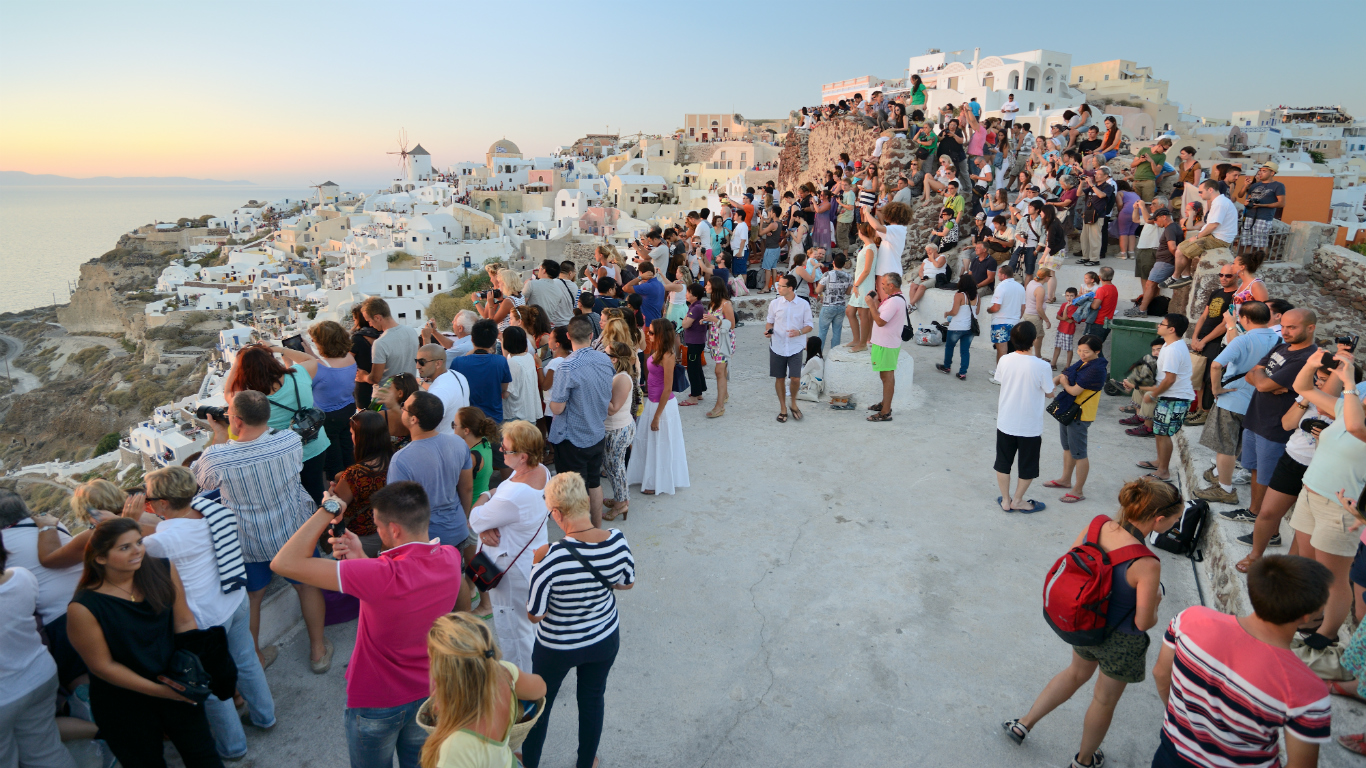
People go to new places to explore charming villages, unspoiled beaches, and ancient architecture, all of which are threatened by overcrowding. The question is how do you deal with tourism’s dark side when it creates millions of jobs and is the main source of revenue for some places.
Some cities are victims of their own hard work to make them popular and loved by tourists. Summer after summer, local governments are imposing or proposing new rules to restrict the number of visitors.
The bad news is that it will eventually have to be done. Otherwise, in just one year, the 20 most visited countries will add more international arrivals than the rest of the world combined. There are similar disparities in individual cities and specific tourist sites.
Hosting more tourists than a city can handle harms the environment and puts a lot of pressure on local residents and infrastructure. This is in addition to problems commercialization causes such as changes in landscape and skyrocketing housing prices.
Residents and officials are pressured to choose whether the economy, safety, culture, or heritage is more important. Even though in some cities threats to limit visits are just talk, they reflect a growing public opinion.
This is a global problem and solutions are being discussed at the international level. These include quotas, promoting alternative attractions, limiting hotel growth, and charging fees for previously free attractions.
To identify places that are no longer very welcoming to tourists, 24/7 Wall St. reviewed dozens of tourist guides and news articles about those that have imposed or proposed restrictions on visitors.
Click here to see the places that are no longer very welcoming to tourists.

1. Skellig Michael, Ireland
The island where “Star Wars: The Force Awakens” was filmed in 2015 has been growing in popularity ever since. Popular appeal, combined with an increase in boat permits, led to almost 17,000 visitors in 2017 and about 7,000 mid-May and mid-July 2018. The UNESCO World Heritage Site allows no more than 180 tourists per day.
[in-text-ad]

2. Mogao Grottoes, China
The 1,600 year-old Mogao Grottoes are known for their Buddhist art and were China’s first UNESCO site. The Library Cave uncovered there has been called “the world’s greatest discovery of ancient Oriental culture.” The maximum number of daily visitors is 6,000. During peak season, the daily limit is 10,000 every other day.

3. Venice, Italy
The “City of Water” has adapted aggressive strategies to limit the number of tourists. The annual total has reached 30 million, whereas only about 50,000 people actually live in the city. Tourists visiting for the day — averaging as many as 70,000 — may soon be charged an entrance fee of about $11.50. During peak times, tourists and locals can be separated, with visitors being redirected to popular places while some areas are only open to locals. At one point, the city installed gates at the end of two famous bridges to keep tourists out. And big cruise ships are no longer allowed to steam past the popular St Mark’s Square.
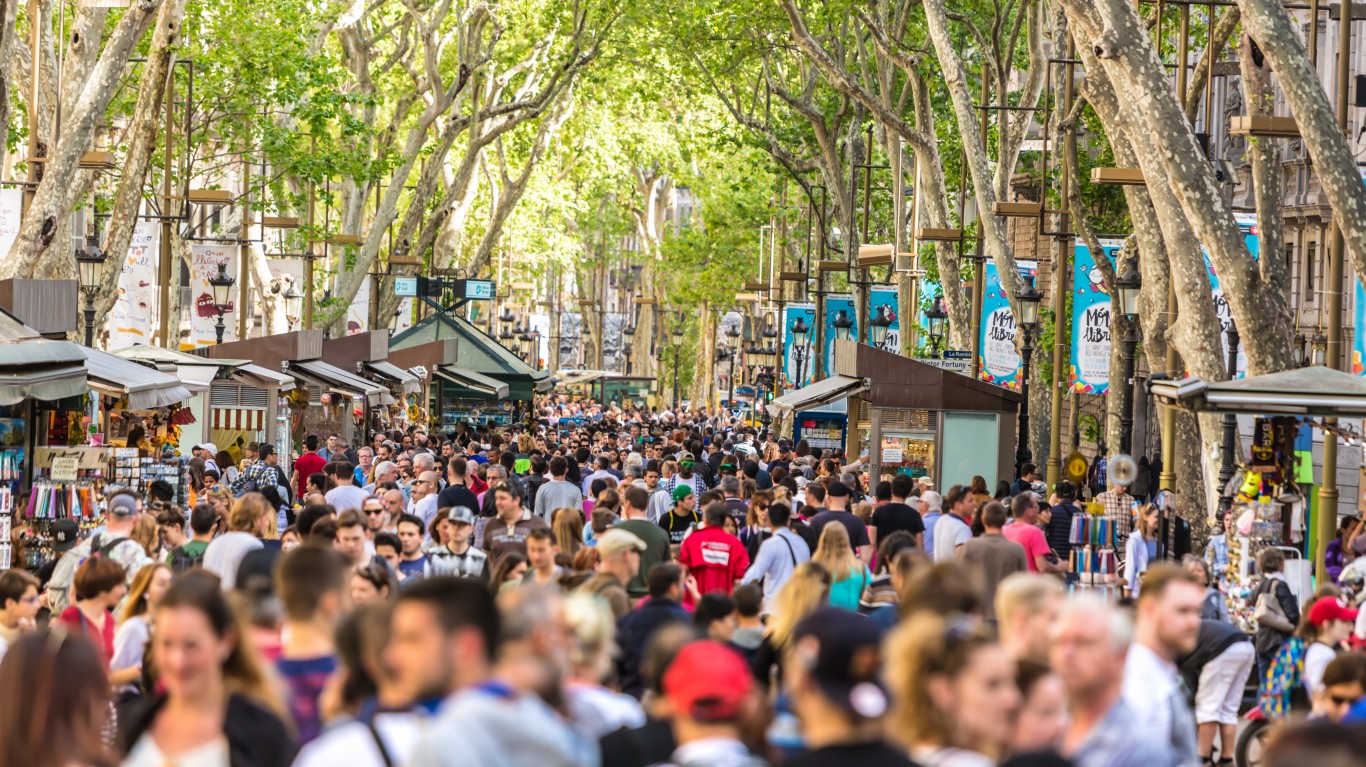
4. Barcelona
Similar to Venice, one of Spain’s most visited cities has been struggling with too many tourists for decades. The city of 1.7 million sees about 32 million tourists a year. No official limit on tourists has been imposed yet, but talk about such restrictions seems to never end. A 2017 law limited the number of beds available in hotels and rentals, imposed a moratorium on building new hotels, and stopped the issuing of licenses for new tourist apartments.
[in-text-ad-2]

5. Amsterdam
Locals are not the only ones who say the city is flooded with tourists; visitors themselves agree their high number of about 20 million a year is a problem. A plan to ban Airbnbs in busy neighborhoods and to limit rentals to 30 days a year outside of them was revealed in May 2018. Passengers visiting on boats will no longer be allowed to disembark in the city center. The plan included a tourist tax hike to 7%, up from 6% in the city and 4% outside it. Other proposals include cruises paying a fee of about $9 per passenger starting this year.

6. Taj Mahal, Agra, India
The most famous mausoleum in the world has about 8 million visitors a year. India’s government is limiting tourists to no more than three hours there in order to prevent overcrowding. Previously it was not uncommon for some people to spend an entire day there. The Taj Mahal easily sees about 60,000 tourists a day during the peak season.
[in-text-ad]
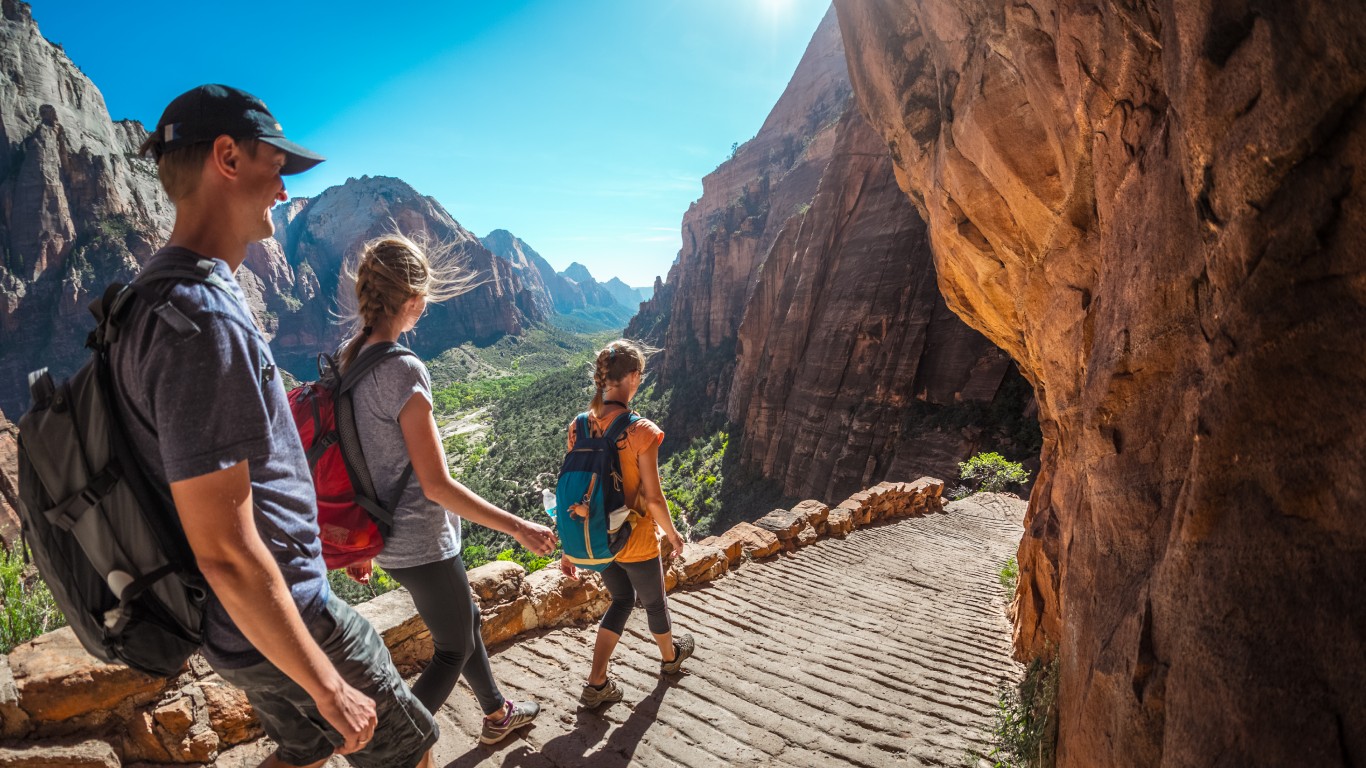
7. Zion National Park, Utah
The third most visited national park in the country attracts more than 4.5 million a year. (No. 1 is Great Smoky Mountains National Park, and No. 2 is Grand Canyon.) The National Park Services (NPS), which manages all 60 national parks in the country, has been considering an admissions cap at Zion, which is famous for its red cliffs and narrow canyons. NPS is also recommending an increase in entrance fees in the summer for Zion and several other parks, to $30 per person, $50 for motorcycles, and $70 per car. The park is also working on a possible visitor reservation system and requiring permits for popular hikes.
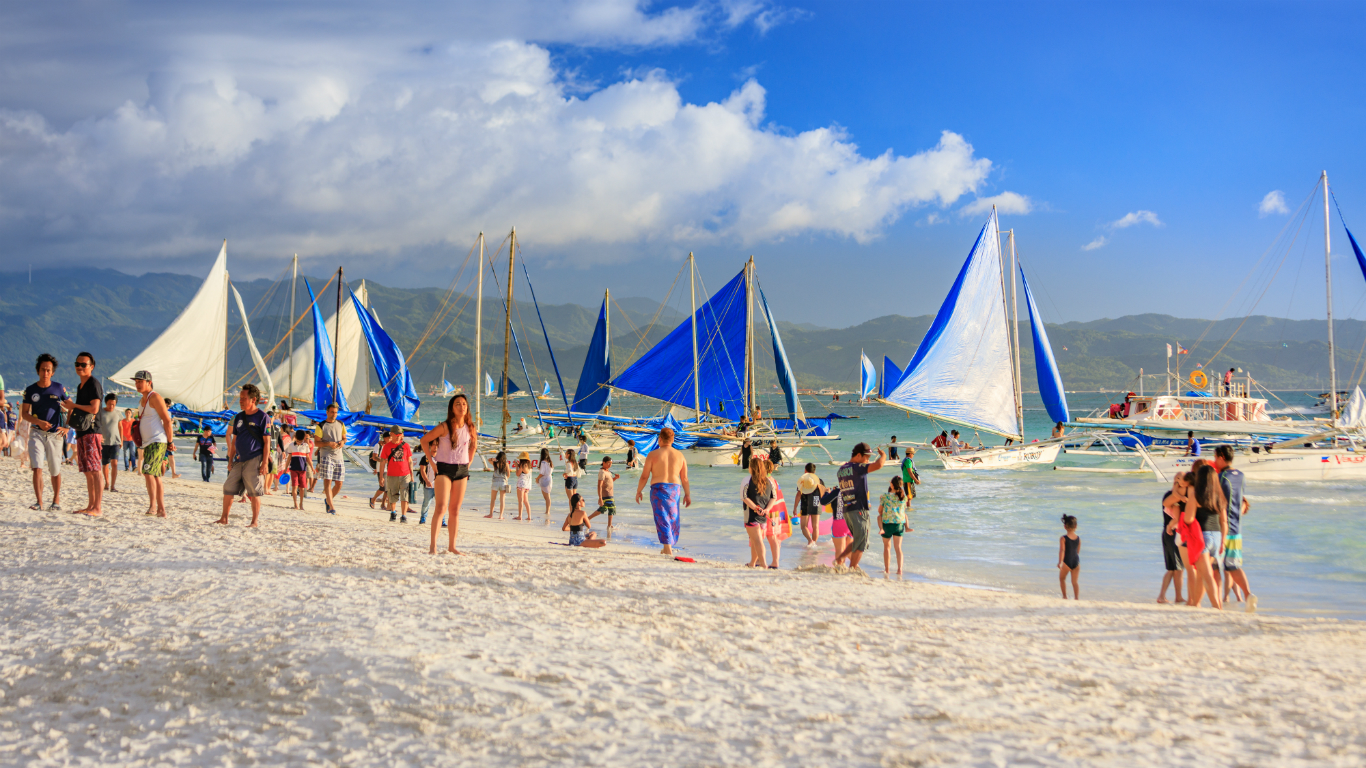
8. Boracay, Philippines
The famous Boracay island was closed for six months to give locals a chance to clean it up. The country’s president had described it as a “cesspool” due to its inadequate sewage system. The island reopened in October 2018, but with the number of tourists way below the daily limit. Tourism is now limited to 6,000 visitors a day at least until October 2019, down from 19,000 before the shutdown. Tourists now also have to show a government-approved hotel reservation.
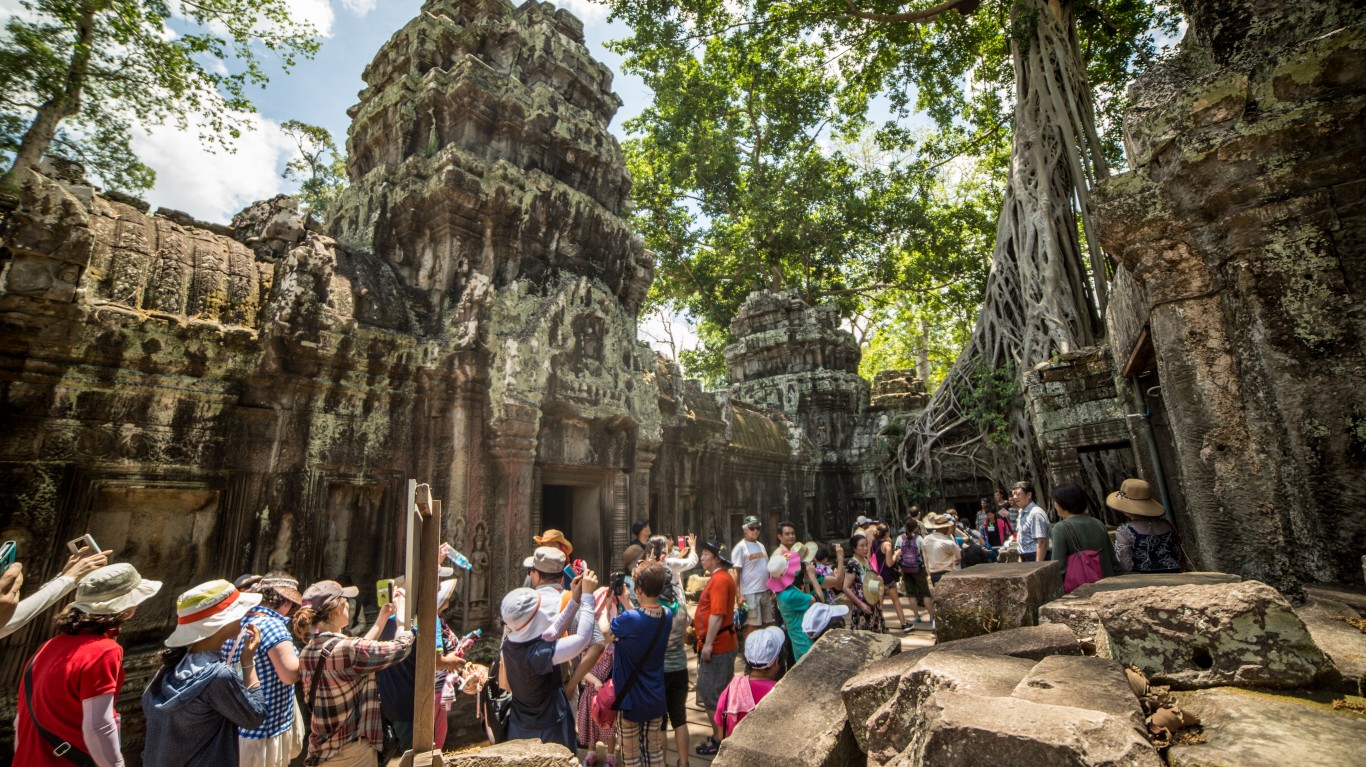
9. Angkor Wat
The Cambodian government has said in its tourism management plan that restrictions on the numbers of tourists in certain parts of the site and on the time spent in the temples are necessary to preserve the complex, which dates back to the 12th century. More than 5 million people visit a year. In March 2017, it was decided that no more than 300 people will be allowed on Phnom Bakheng at one time, a very popular hill from which to watch the sunset over the ancient ruins.
[in-text-ad-2]

10. Antarctica
The number of tourists rose by 17% — to almost 52,000 — in the year up to the 2017/2018 season. Ships with more than 500 passengers are not allowed to land while in Antarctic waters. The maximum number of visitors allowed ashore to see the scenery and wildlife is 100. A permit is required for all human activities, according to the International Association of Antarctica Tour Operators.

11. The Galapagos Islands
The Galapagos Islands are one of the most diverse ecosystems in the world, known for wildlife and marine species, and for inspiring Charles Darwin’s theory of evolution. The archipelago’s popularity is hurting animal and plant life, which is why the authorities are imposing a limit for cruise passengers. They can’t stay more than five days, and there will be no more than four landings in 14 days. As much as 95% of the land is designated as protected.
[in-text-ad]
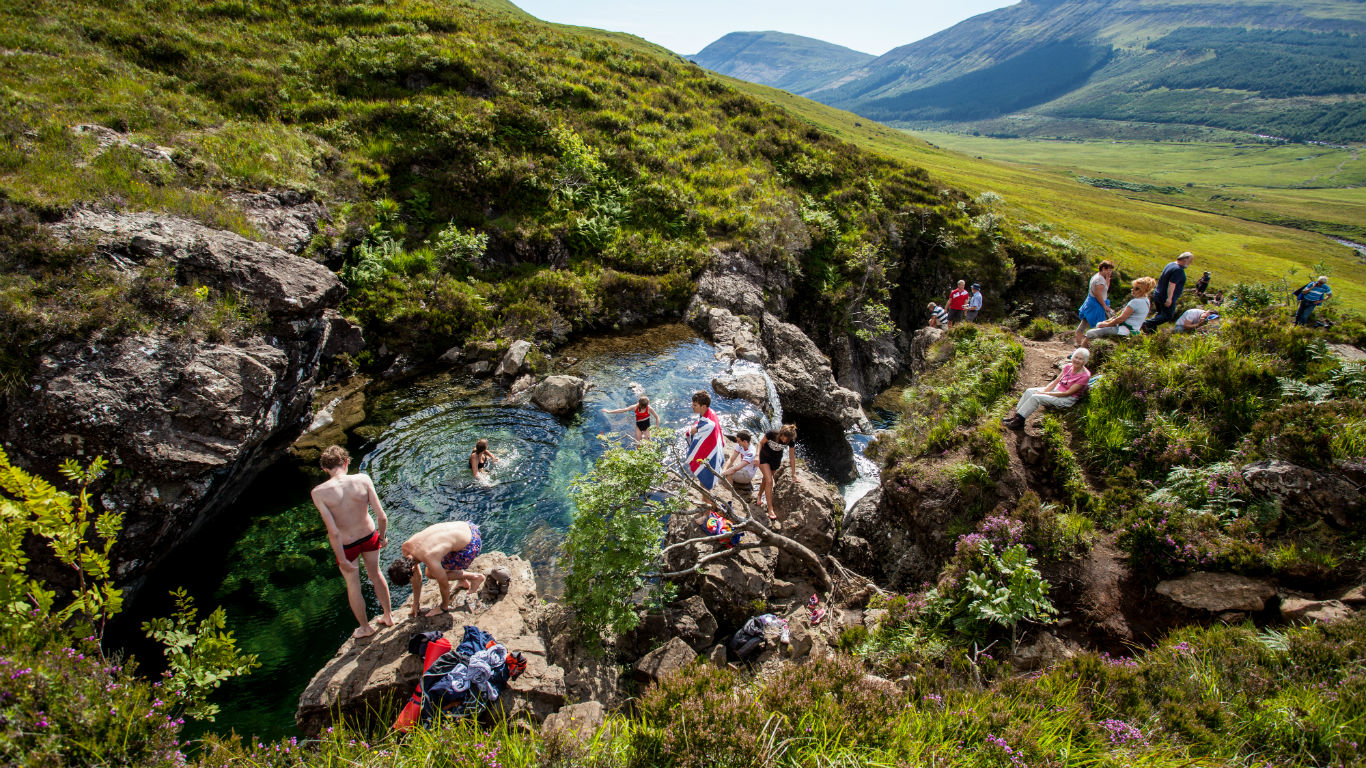
12. Isle of Skye, Scotland
The popular Scottish holiday destination has become too popular and is bursting at the seams. It is not uncommon for hotels to have to turn tourists away in the summer. Many travelers arrive without plans or accommodations and are unable to find a room as everything is full. Calls for a tourist tax have been growing.

13. Machu Picchu
About 3,800 people visit the ancient Inca citadel each day. Limits were imposed in 2017. Tourists to Machu Picchu, which is located almost 8,000 feet above sea level, have to leave within a specific time and cannot go back. In addition, all visitors must come with an official Machu Picchu guide or licensed tourist guide, and groups cannot include more than 16 people.

14. Iceland
More than 2.3 million people visited Iceland in 2017, seven times the number of residents. Attempts to clamp down on tourists have been made in the past. A business tax on people renting their homes for more than three months of the year was proposed. Nearly 4,000 apartment listings on Airbnb in Iceland were created in a single month in 2016, 124% more than in 2015. A 2014 report concluded that improvements need to be made in dealing with mass tourism and limiting access to certain places.
[in-text-ad-2]
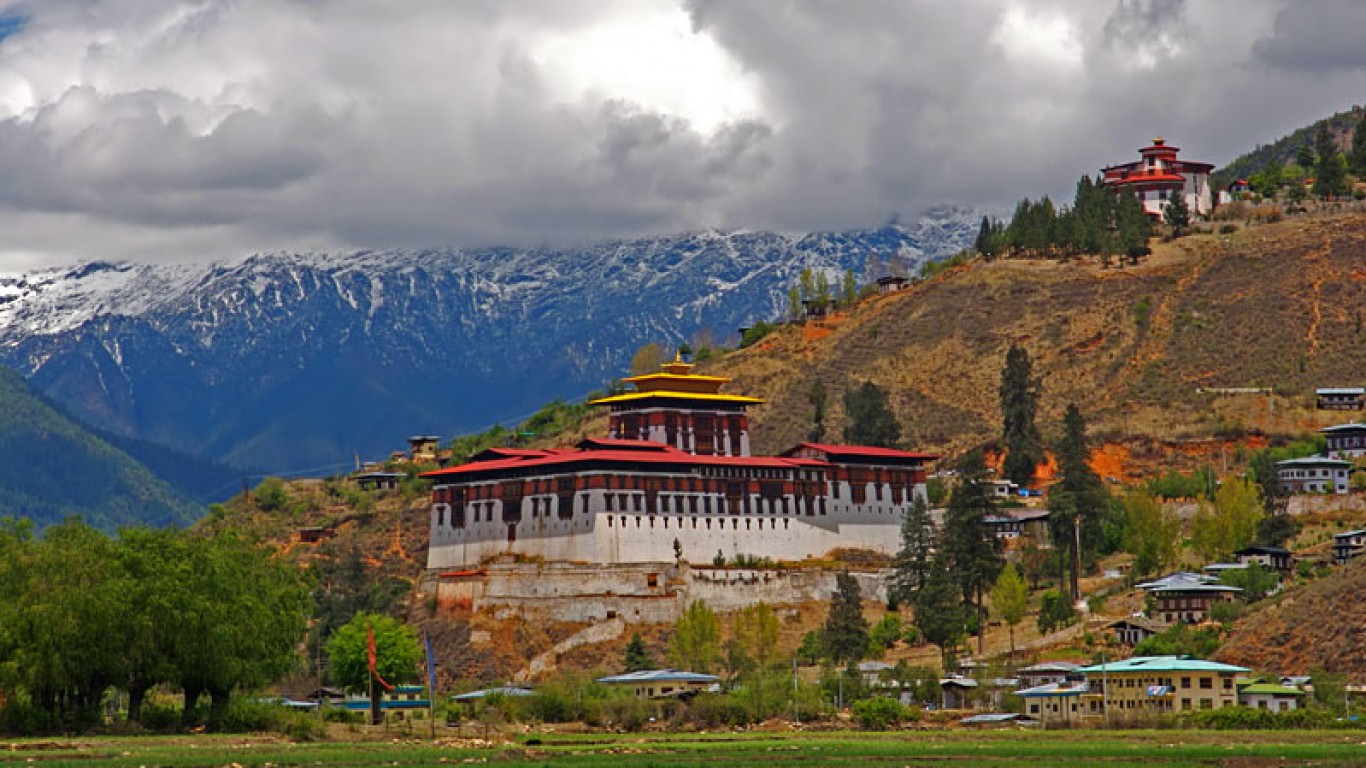
15. Bhutan
The landlocked Himalayan country has chosen to focus on quality over quantity when it comes to tourism. The country doesn’t limit the number of visitors, but has adopted a “high value, low impact” policy, allowing only tourists who respect Bhutan’s culture and values. All visitors must book their holiday through a Bhutanese tour operator or its international partners.

16. Cinque Terra, Italy
The five seaside villages connected by cliffside trails on the Italian Riviera became so popular that plans were made in 2016 to close the area once the number of tourists reaches 1.5 million. That would be a reduction of 40% from 2015. A number of people would be allowed per day and once that number is reached, tourists would have to make plans to visit on the next available day.
[in-text-ad]
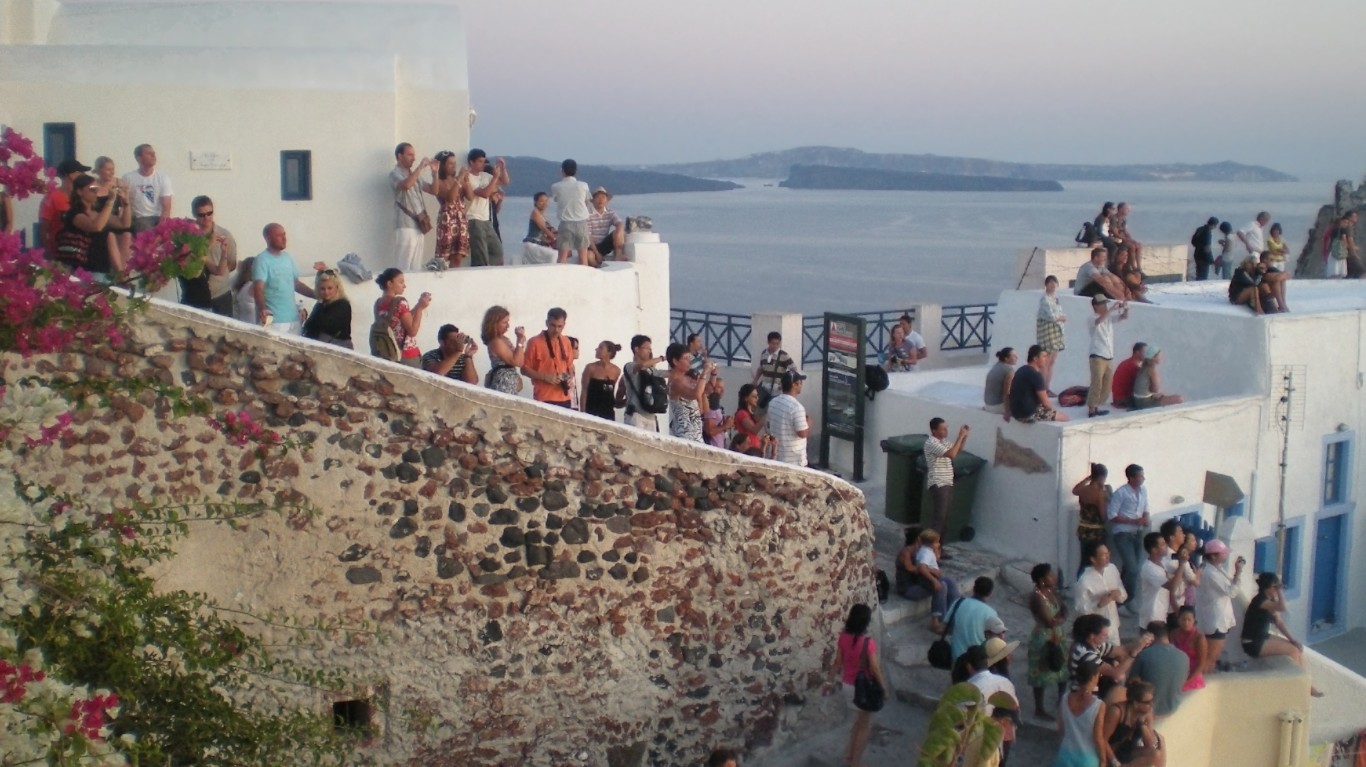
17. Santorini, Greece
Santorini, known for its buildings painted in stunning shades of blue and white , as well as sunsets, is one of the most popular islands in the world. More than 2 million people visit a year, often with over 10,000 tourists a day. Under new rules, there will be no more than 8,000 daily travelers from cruise ships allowed.

18. Dubrovnik, Croatia
Dubrovnik, which skyrocketed in popularity after “Game of Thrones” scenes were filmed there, is taking measures to reduce the number of day visitors from cruise ships. More than 280,000 visited between January and June of 2018. In 2017, 749,000 tourists visited. Now, there will be no more than 4,000 tourists allowed in the Old City at any time, even though the UNESCO recommendation is 8,000.
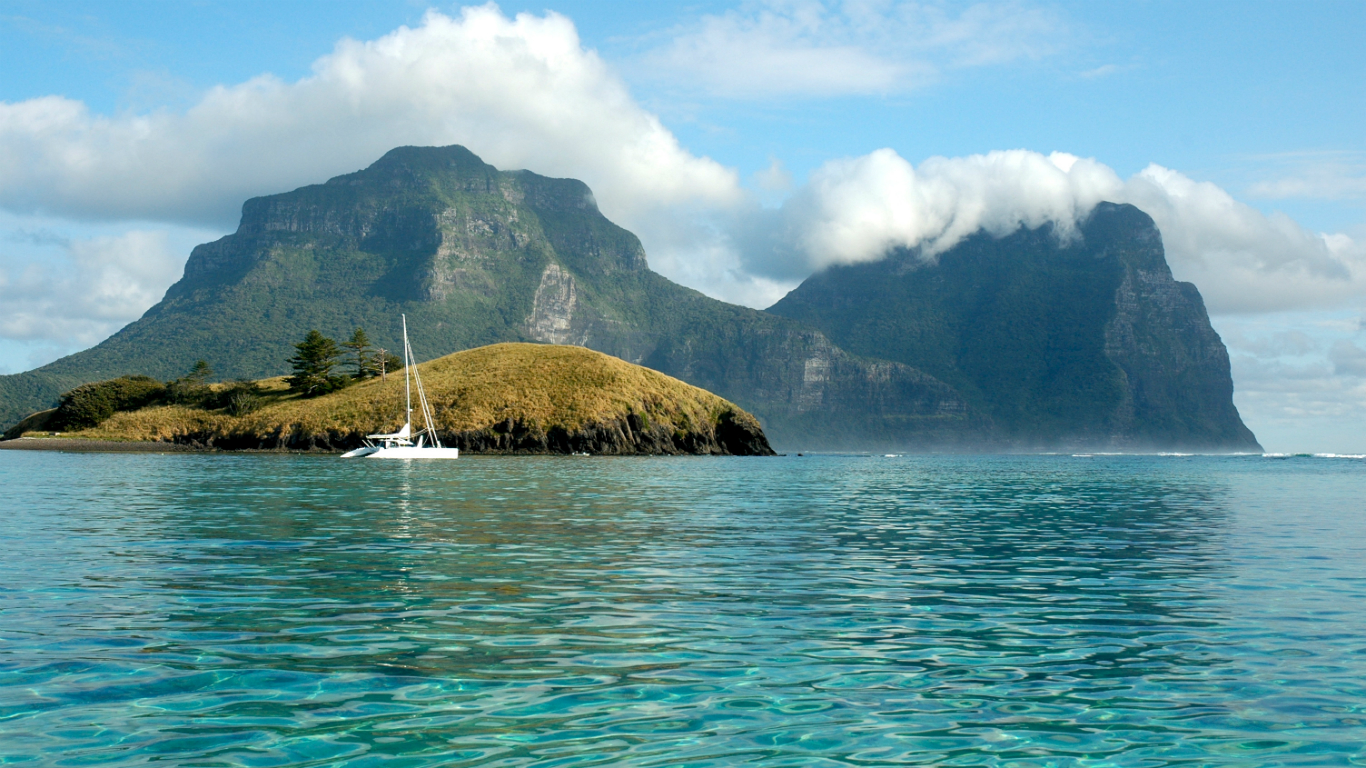
19. Lord Howe Island, Australia
The small island off the coast of Australia, only reached by boat or plane, has capped daily visits at 400. Locals recommend against people buying tickets without confirmed accommodation because fares may not be refundable.
[in-text-ad-2]
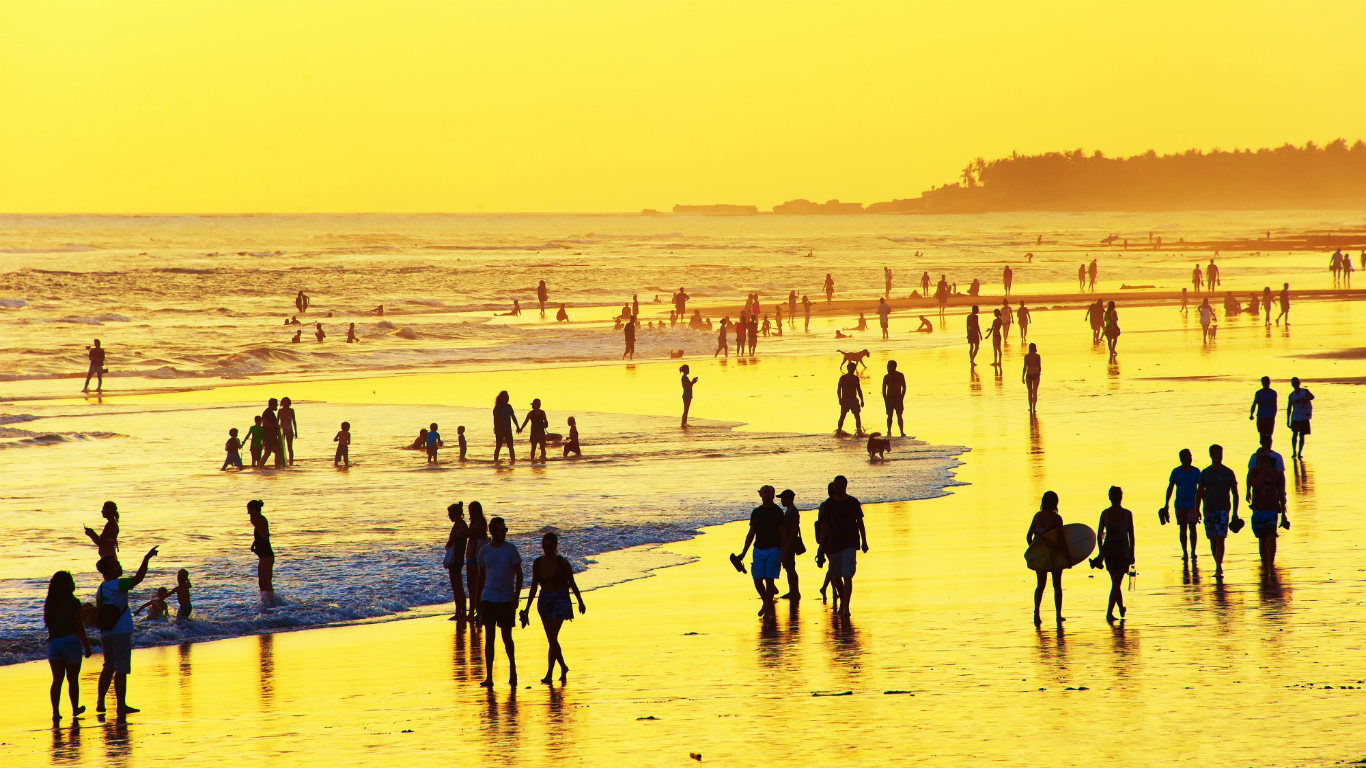
20. Bali, Indonesia
Bali, an island of 4.2 million people, attracted 5 million tourists in the first 10 months of 2018 alone. In September, the local government proposed a ban on tourists entering sacred parts of temples after several instances of unruly and disrespectful visitors desecrating holy sites.
100 Million Americans Are Missing This Crucial Retirement Tool
The thought of burdening your family with a financial disaster is most Americans’ nightmare. However, recent studies show that over 100 million Americans still don’t have proper life insurance in the event they pass away.
Life insurance can bring peace of mind – ensuring your loved ones are safeguarded against unforeseen expenses and debts. With premiums often lower than expected and a variety of plans tailored to different life stages and health conditions, securing a policy is more accessible than ever.
A quick, no-obligation quote can provide valuable insight into what’s available and what might best suit your family’s needs. Life insurance is a simple step you can take today to help secure peace of mind for your loved ones tomorrow.
Click here to learn how to get a quote in just a few minutes.
Thank you for reading! Have some feedback for us?
Contact the 24/7 Wall St. editorial team.



